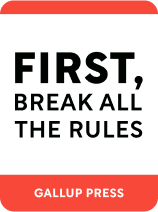

This article is an excerpt from the Shortform book guide to "First, Break All the Rules" by Gallup Press. Shortform has the world's best summaries and analyses of books you should be reading.
Like this article? Sign up for a free trial here .
Is micromanagement always a bad thing? Can overseeing every little detail of employees’ workflow ever be good?
Micromanagement is a common practice in modern workplaces. Most of the time, micromanagement is toxic in that it hinders employee performance. However, there are occasions when micromanagement is the way to go.
Here’s why managers think they must oversee every detail and when that can actually be helpful.
Micromanagement in the Workplace
Micromanagement in the workplace is more common than you think, especially with beginners (understandably so). Managers come up with a variety of excuses to justify their need to control every aspect of the work:
Excuse #1: I Know the Best Way to Approach the Work
While it’s tempting to believe, there’s no one “best” approach to any position. Everyone has different talents that inform how they work effectively. While you can offer suggestions and resources to assist your employees, trying to dictate every step of their process ignores the talents that make them effective in the first place. Embrace the uniqueness of your employees and allow them to approach the work in a way that plays into their talents.
For example, Madeline Hunter, an education expert, developed a 7-step method that she believed to be the best way to create an effective lesson. At first, many districts bought into Hunter’s method by forcing their teachers to develop lessons using the 7-steps. However, many of these districts showed no improvement in student achievement scores. In fact, some districts began performing more poorly than before. This is because Hunter’s approach didn’t always work with the talents of the teachers that were forced to use it.
Excuse #2: My Staff Aren’t Capable of Working on Their Own
If you believe this, then you didn’t hire the right people for the job. In contrast, if you hire people based on their talents, then you should be able to step away with the knowledge that your employees are capable of doing the work.
For example, if you manage a high-end yoga studio, you may be in charge of an in-house cleaning team. If you don’t hire cleaners based on their talents, then you may find yourself watching over their every move to ensure that they do their jobs properly. However, if you hire people that have talent for seeing the details and creating a clear process, you won’t have to watch over their every move to know that they’re doing the job that you hired them to do.
Excuse #3: They Need to Earn My Trust First
If you think that you can’t trust your own team, you may be allowing your own insecurities to dictate the way that you run your team. Yes, sometimes, people will let you down. However, you need to embrace that this is the exception, not the rule.
For example, if you manage a restaurant and assume that your wait staff is trying to steal from the till, you may make a rule that you’re the only one who can operate the register. Not only does this place strain on your relationship with your employees, but it also makes the payment process slower and keeps you from performing your other duties.
Excuse #4: My End Goals Defy Description
While some goals are more challenging to define than others, they’re still definable. This may mean that you need to put more thought and effort into creating a clear goal for less tangible performance standards.
For example, employee satisfaction is an intangible skill. If you’re in upper management, you may be tempted to dictate the ways that lower managers are required to interact with their employees. However, this ignores their talents and forces them to adhere to a process they may not be comfortable with. Instead, you could develop an employee survey that teams fill out once a year that allows them to rank their satisfaction in their positions. These results give you an indication of your managers’ relationships with their employees and keeps you from forcing a potentially ineffective procedure.
When and How to Define Process
Though you should try to avoid micro-managing, there are occasions when you have to define process. The following are tips to help you determine when and how to define process to your employees:
Tip #1: Define process when a position requires accuracy for monetary, legal, or safety reasons.
If you fail to define the process for employees dealing with monetary, legal, or safety standards, you risk putting your company in jeopardy. Give these employees a clear set of rules or requirements that ensure that you and your organization are protected from extreme financial loss, legal repercussions, and failures in safety.
For example, you manage a theme park. You hire a project manager to oversee the construction of a new roller coaster. Though you want to allow them the freedom to work in their own way, you know that there are particular steps that need to happen in order to ensure financial, legal, and safety standards are met.
- To ensure financial standards, you give the manager a budget and require that they report all expenses to you.
- To ensure legal standards, you require your manager to obtain waivers from all construction workers and contractors.
- To ensure safety standards, you ask your manager to give the architects and engineers a checklist that ensures the ride meets certain safety requirements such as rider security and g-force maximums.
Tip #2: Define process when a position must adhere to industry or organizational standards.
Standards are a variety of conventions (such as symbols, scales, and terms) that ensure consistency across an industry or organization. Standards create a universal language that allows for clarity and consistency in both internal and external communication. When standards are an essential part of your organization, define specific protocols and procedures to ensure the accuracy and consistency of those standards.
For example, you manage a team of 911 operators. When overseeing their performance, you need to make sure that they communicate using standard terminology when speaking to law enforcement or medical services. This prevents confusion and ensures the highest level of efficiency possible.
Tip #3: Defining process is only helpful when it doesn’t complicate the path to your desired goals.
Sometimes, organizations develop policies that are supposed to work toward a specific goal but actually hinder their progress in practice. For example, many airlines pride themselves on on-time departures as a sign of excellent customer service. However, their policy for tracking “on-time” departures is to track the moment that the plane leaves the gate, not the moment that it takes off.
This means that a plane that leaves the gate but waits on the runway for an hour is still considered “on-time.” This encourages pilots to keep frustrated and cramped customers sitting on a plane that has left the gate rather than return them to the terminal because it will improve his “on-time” rating. While it may seem on paper that the airline is succeeding at improving customer satisfaction, the reality is that their policy often doesn’t serve the customer.
Note: Defining Process Won’t Create Customer Satisfaction
It will only prevent dissatisfaction. Customer satisfaction relies on your team’s ability to develop relationships with your clients and customers. These relationships develop through four levels of customer service.
Level #1: Accuracy. At the bare minimum, your company needs to work accurately. For example, customers want the food that they ordered, the room they reserved, or the item they purchased. If your team fails to provide accurate service, they can’t build any degree of customer satisfaction.
Level #2: Availability. Once you’ve proven that you can work accurately, your company needs to be available. For example, if a landscaper provides strong services but is never available to do the work, a customer will eventually get frustrated and use another service. Great service without availability pushes potential customers away.
Level #1 and Level #2 are baseline expectations. Though they still require employees with the proper talents to execute them efficiently, they can be supported by standard procedure or step-by-step instruction. However, they don’t build customer satisfaction. They only prevent customer dissatisfaction.
Level #3: Partnership. Once you’ve created availability, your company needs to connect with a target audience and provide them with a personalized experience. For example, if a local clothing company wants to promote body positivity in their clothing, they may create an initiative called “For Your Body” in which they invite customers to get tailored fashion looks that allow them to feel fashionable and comfortable. Baseline service without partnership doesn’t give the customer the “above and beyond” experience they need to feel higher levels of satisfaction.
Level #4: Advice. Once you’ve connected with your audience, your company needs to be prepared to give advice. Customers begin to seek advice from the companies that they trust. For example, if a local hardware store has proven that they care about the projects their customers are doing, people may begin to seek advice from team members when they’re developing their DIY projects. Be sure to educate and prepare yourself and your team to give appropriate advice. If customers seek help, but you’re unable to give it, it may hurt your credibility.
Level #3 and Level #4 are heightened expectations. These change organization-to-organization and can’t be developed by standardized processes. They require team members with specific talents that allow them to connect with customers, help them solve their problems, and teach them ways to improve their lives. These heightened expectations are what build customer satisfaction.

———End of Preview———
Like what you just read? Read the rest of the world's best book summary and analysis of Gallup Press's "First, Break All the Rules" at Shortform .
Here's what you'll find in our full First, Break All the Rules summary :
- Why only 13% of the world’s workforce is actively engaged at work
- How to find strong employees and keep them
- The 12 questions to ask your employees that help you determine the strength of your organization






